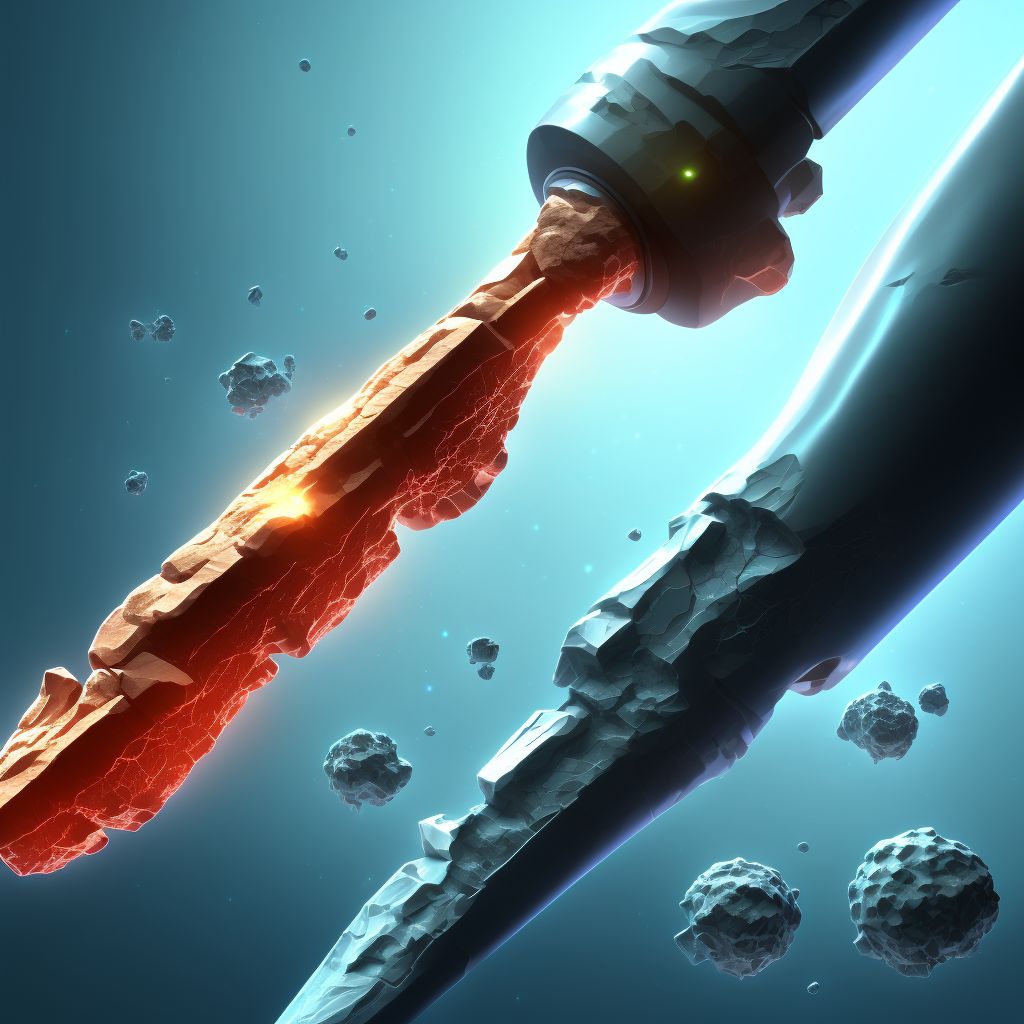
Nondisplaced oblique fracture of shaft of right tibia, initial encounter for open fracture type IIIA, IIIB, or IIIC Save
ICD-10 code: S82.234C
Disease category: S82.234: Nondisplaced oblique fracture of shaft of right tibia
Nondisplaced Oblique Fracture of Shaft of Right Tibia: Understanding Initial Encounter for Open Fracture Type IIIA, IIIB, or IIIC
A nondisplaced oblique fracture of the shaft of the right tibia refers to a specific type of bone break that occurs in the lower leg. This fracture can occur in various open fracture types, including IIIA, IIIB, or IIIC. It is crucial to understand the initial encounter for such fractures to ensure appropriate medical attention and management.
When an individual experiences a nondisplaced oblique fracture of the shaft of their right tibia, it means that the bone has cracked but remained aligned without any significant displacement. This type of fracture typically occurs due to a direct blow or excessive force applied to the leg. It can be associated with open fractures, which involve a break in the skin that exposes the bone to the external environment.
During the initial encounter for open fractures type IIIA, IIIB, or IIIC, medical professionals aim to assess the severity of the injury and plan a suitable course of action. This includes evaluating the extent of soft tissue damage, checking for associated injuries, and determining the risk of infection.
- Soft tissue damage assessment: Doctors carefully examine the surrounding soft tissues to evaluate any potential damage caused by the fracture. This assessment helps determine the severity of the injury and guides the treatment decisions.
- Associated injury check: In addition to the tibia fracture, medical professionals also look for any associated injuries that might have occurred concurrently. This comprehensive evaluation ensures that all injuries are addressed appropriately.
- Infection risk determination: Open fractures carry a higher risk of infection due to the exposure of the bone and surrounding tissues. Healthcare providers assess the level of contamination and any signs of infection to initiate preventive measures and administer appropriate antibiotics if necessary.
It is important to seek immediate medical attention if you suspect a nondisplaced oblique fracture of the shaft of your right tibia, especially if it is an open fracture type IIIA, IIIB, or IIIC. Prompt medical intervention can help prevent further damage, reduce the risk of complications, and promote proper healing.
Remember, this article provides general information about the initial encounter for open fractures and does not cover specific treatment options. Consulting with a qualified healthcare professional is essential for accurate diagnosis and appropriate treatment based on individual circumstances.
Treatment of Nondisplaced oblique fracture of shaft of right tibia, initial encounter for open fracture type IIIA, IIIB, or IIIC:
Treatment Options for Nondisplaced Oblique Fracture of Shaft of Right Tibia, Initial Encounter for Open Fracture Type IIIA, IIIB, or IIIC
A nondisplaced oblique fracture of the shaft of the right tibia, specifically an open fracture Type IIIA, IIIB, or IIIC, requires immediate medical attention to ensure proper healing and prevent complications. Treatment options for such fractures...
To see full information about treatment please Sign up or Log in